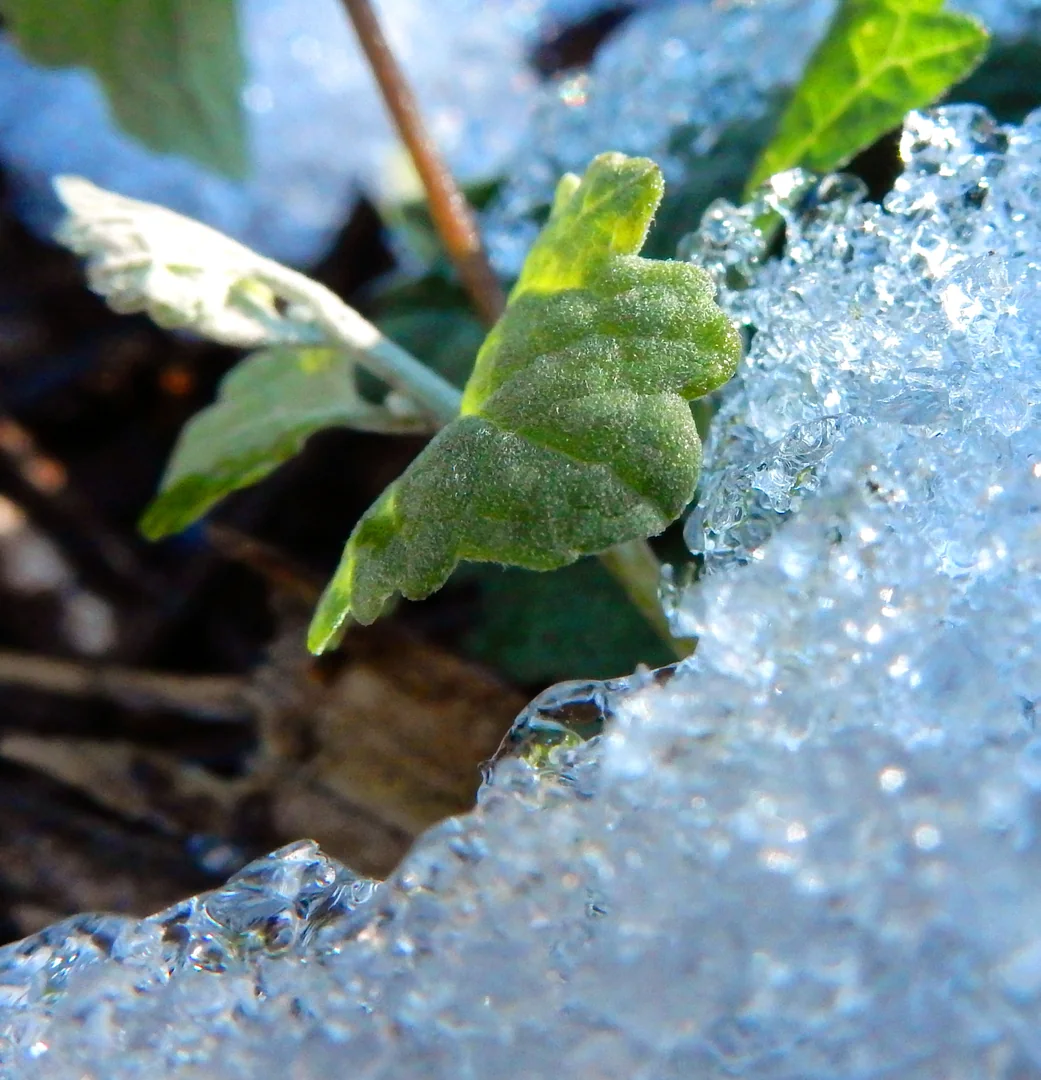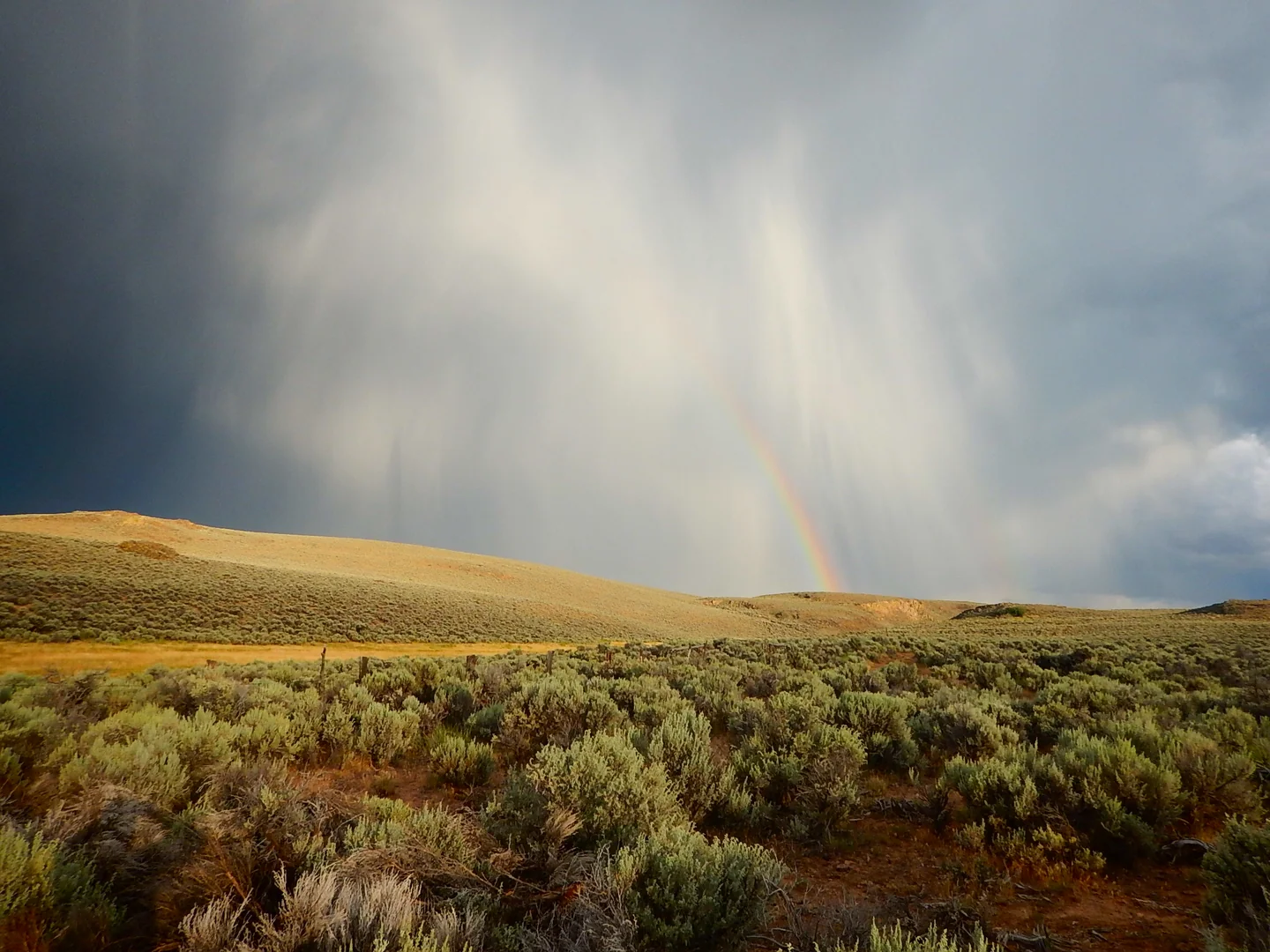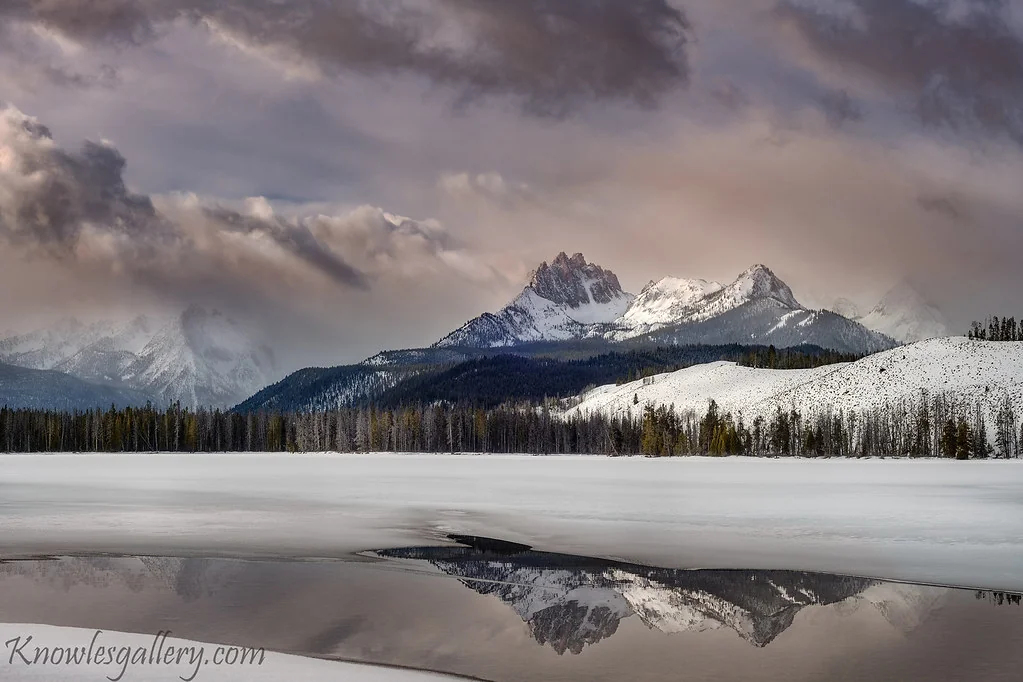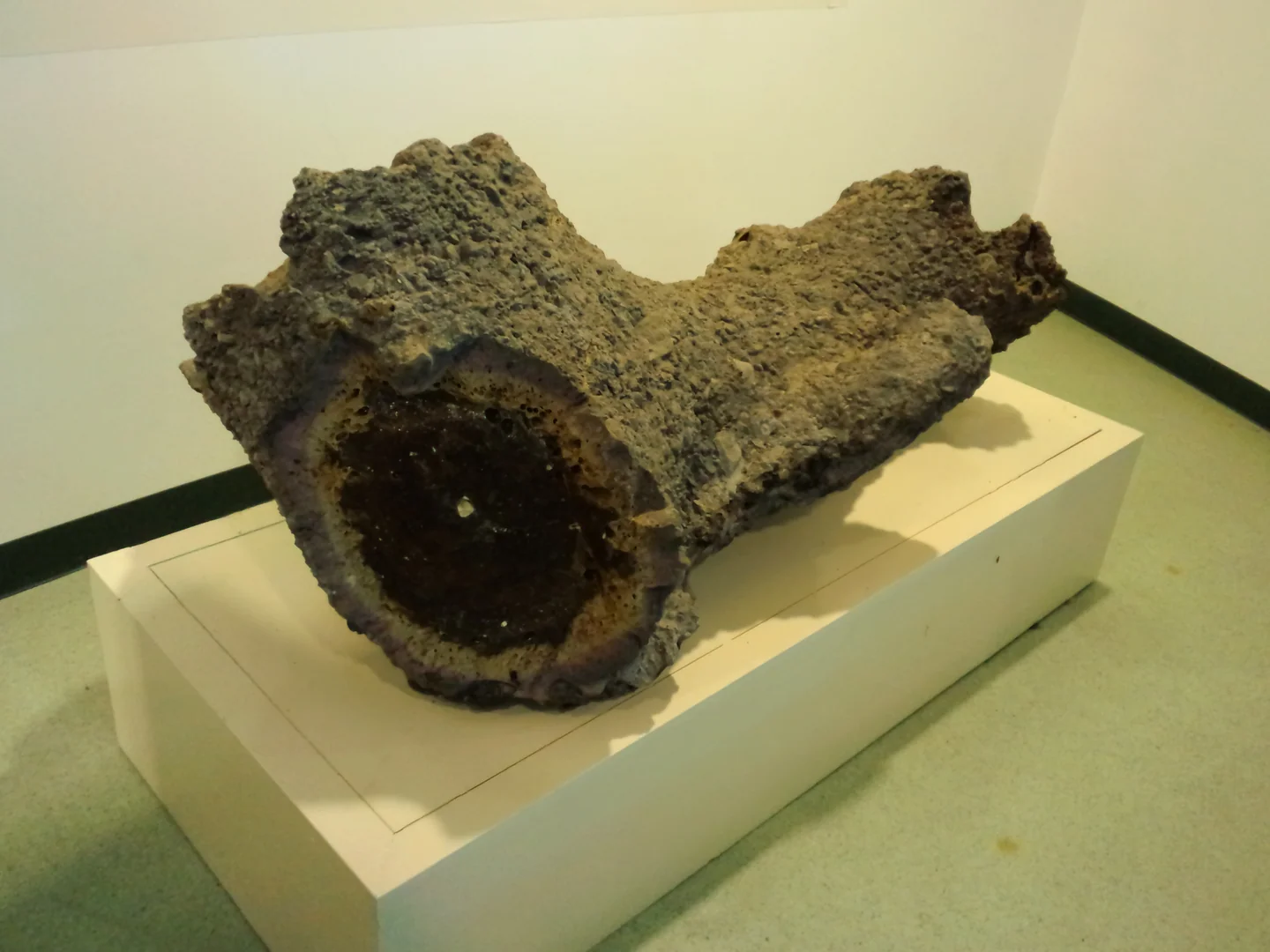When Lightning Turns Stone to Glass: Following Idaho's Storm-Born Treasures Through Four Seasons
Discover Idaho's fulgurite hunting across four seasons. Complete guide to timing, locations, and seasonal strategies for finding lightning glass treasures

The split second when lightning meets earth creates something extraordinary—glass tubes twisted like nature's own blown artwork, formed in temperatures hotter than the sun's surface. Idaho's vast wilderness serves as a natural laboratory for these phenomena, where fulgurites hide beneath sagebrush and along ridgelines, waiting for those who understand the rhythm of storms and seasons.
Most treasure hunters chase gold or gemstones with metal detectors and shovels. Fulgurite hunting requires different tools: weather apps, topographic maps, and patience measured in seasons rather than hours. These lightning-born glass formations tell stories of ancient storms, recent strikes, and the electrical drama that plays out across Idaho's high desert country every summer.
The key to successful fulgurite hunting lies in understanding how each season reveals different chapters of this underground story. Spring snowmelt exposes fresh evidence, summer storms create new specimens, autumn's dry conditions offer perfect hunting weather, and winter's freeze-thaw cycles shift the landscape's secrets. Each season demands different strategies, equipment, and expectations.
Spring Awakening
March through May transforms Idaho's lightning country from snow-locked silence to a treasure hunter's paradise. Snowmelt acts as nature's excavation crew, washing away months of accumulated debris and exposing fulgurites that formed during previous summer's thunderstorm seasons. The stunning vista of emerging high desert reveals glass treasures that spent winter buried under protective snow cover.
Start your spring hunting in the Boise foothills and South Hills near Twin Falls, where elevations between 3,000-5,000 feet experience the most reliable snowmelt timing. Look for south-facing slopes that shed snow earliest, typically mid-March in lower elevations. The contrast between dark volcanic soil and white fulgurite glass creates perfect spotting conditions during these weeks.
Equipment for spring expeditions differs significantly from summer hunting. Waterproof boots handle snowmelt runoff, while lightweight rain gear protects against spring's unpredictable weather. Pack extra layers—morning temperatures hover near freezing while afternoon sun can push readings into the 70s. A GPS unit proves essential when snow obscures familiar landmarks.
The most productive spring hunting occurs during the "exposure window"—that three-week period after snow disappears but before new vegetation emerges. Timing varies by elevation and aspect, but generally runs April 15-May 15 in prime fulgurite country. During this window, the ground lies bare and glass specimens stand out like scattered crystal fragments.
Focus searches on elevated ridges and isolated high points where lightning preferentially strikes. These areas shed snow first and offer the longest exposure windows. Avoid hunting in valleys and draws where snowmelt creates muddy conditions that can bury specimens under sediment layers.
Spring hunting yields different fulgurite types than other seasons. Specimens tend to be older, weathered examples that survived multiple freeze-thaw cycles. While less pristine than fresh summer finds, these pieces often display unique surface textures and interesting branching patterns created by seasonal weathering processes.
Summer's Electric Theater
June through August brings Idaho's fulgurite season into full swing as afternoon thunderstorms march across the high desert with clockwork precision. This remarkable landscape becomes an active laboratory where visitors can witness the actual formation process—if they maintain safe distances and respect the power involved.
The Owyhee Mountains and Sawtooth National Recreation Area offer premier storm-watching opportunities. Position yourself at safe vantage points during late afternoon hours when atmospheric conditions create perfect fulgurite-forming scenarios. Lightning strikes sand, volcanic ash, or silica-rich soils, instantly creating glass tubes that extend several feet underground.
Summer hunting requires early morning starts to beat afternoon thunderstorms that pose serious safety risks. Begin searches at dawn and conclude by 11 AM when storm cells typically begin developing. Never hunt during active weather—lightning poses obvious dangers, while rain makes fresh fulgurites nearly impossible to spot against wet soil.
Recent strike sites reveal themselves through several telltale signs. Look for small craters surrounded by scattered glass fragments, areas where sand appears melted or fused, and vegetation showing burn patterns. Fresh fulgurites often protrude slightly from the surface, appearing as whitish or clear glass tubes emerging from disturbed soil.
The Bruneau Sand Dunes area produces spectacular specimens during summer months. The fine, silica-rich sand creates optimal conditions for fulgurite formation, while the open terrain offers excellent visibility for spotting new strikes. Access requires high-clearance vehicles and careful navigation of sandy roads that become impassable when wet.
Summer expeditions demand serious preparation. Carry multiple gallons of water per person, high-SPF sunscreen, and wide-brimmed hats. Temperatures routinely exceed 100°F with minimal shade. Start before sunrise and retreat to air-conditioned vehicles by midday. GPS units with extra batteries prove essential in this vast, feature-poor landscape.
The most productive summer hunting occurs 2-3 days after major thunderstorm events. Monitor weather radar and lightning detection networks to identify areas receiving significant strikes. Road conditions may require waiting additional days for access, but patience often rewards hunters with pristine specimens still warm from their formation.
Autumn's Fleeting Exposure
September through November creates Idaho's premium fulgurite hunting conditions as summer's heat fades and winter's snow remains months away. Morning winter sunrise over little redfish lake Idaho showcases the crystal-clear visibility that makes autumn the preferred season for serious collectors.
Temperatures moderate into comfortable ranges while precipitation drops to annual minimums. This combination creates ideal spotting conditions—no snow cover, minimal vegetation, and excellent lighting for identifying glass specimens against earth-toned backgrounds. The golden hour extends throughout autumn days, providing optimal photography lighting for documenting finds.
The Snake River Plain becomes particularly productive during autumn months. Agricultural areas that were off-limits during growing season open for exploration after harvest completion. Many farmers welcome respectful hunters who ask permission and share interesting discoveries. These cultivated areas often concentrate fulgurites along field edges where farming equipment avoids.
Autumn hunting strategies focus on systematic grid searches of promising terrain. With comfortable temperatures and stable weather patterns, hunters can spend entire days methodically covering large areas. Use GPS units to mark search zones and avoid redundant coverage. The season's extended daylight hours allow thorough investigation of sites that warrant detailed attention.
Wildlife activity increases significantly during autumn months as animals prepare for winter. Deer, elk, and antelope movement creates new exposure opportunities while potentially burying others. Fresh animal trails often reveal fulgurites disturbed from subsurface positions. However, respect hunting seasons and avoid areas during peak wildlife activity periods.
The most significant autumn advantage involves photographing and documenting discoveries. Clear skies, moderate temperatures, and excellent lighting create perfect conditions for recording GPS coordinates, taking detailed photographs, and creating field notes. Many specimens discovered during hasty summer hunts receive proper documentation during autumn return visits.
October typically provides the season's peak conditions. Summer's plant growth has died back while winter weather systems remain infrequent. The month offers reliable access to high-elevation sites that become snow-covered by November. Plan major expeditions for October's second and third weeks when conditions are most stable.
Winter's Hidden Archive
December through February transforms fulgurite hunting from active searching to historical research and preparation. The underground story continues developing as freeze-thaw cycles gradually expose previously buried specimens while covering others under expanding soil layers.
Winter months offer perfect opportunities for studying museum collections and connecting with other collectors. The Iwamizawa-park local-history-and-science-museum fulgurite displays demonstrate the incredible variety found in lightning-prone regions. Idaho's universities and geological societies maintain extensive fulgurite collections available for research purposes.
Serious collectors use winter months for specimen preparation and analysis. Fresh finds require careful cleaning to remove soil deposits without damaging delicate glass structures. Microscopic examination reveals formation details invisible during field collection. Many hunters discover their most interesting specimens only after detailed winter analysis.
Indoor activities include mapping promising locations for spring exploration. Topographic maps combined with lightning strike databases identify potential hunting areas before snow makes reconnaissance impossible. Weather service records reveal strike patterns and frequencies that guide future expedition planning.
Winter weather creates subsurface changes that affect spring hunting success. Repeated freeze-thaw cycles gradually shift fulgurites toward the surface while burying others deeper. Snow load compresses soil layers, potentially exposing specimens along slope faces when spring melt creates erosion channels.
Equipment maintenance becomes critical during winter months. Clean and waterproof GPS units, replace batteries in metal detectors, and repair any damage from previous season's expeditions. Order replacement gear and plan equipment upgrades based on previous year's experiences.
The most valuable winter activity involves connecting with Idaho's geological community. University geology departments, rock and mineral clubs, and online forums provide networking opportunities with experienced hunters. Many lifelong collecting friendships begin during winter meetings and presentations.
February marks the transition period when dedicated hunters begin monitoring weather patterns for early spring opportunities. Elevation-dependent snowmelt creates hunting opportunities that can begin weeks before general access returns to most areas.
The Hunter's Calendar
Successful fulgurite hunting requires understanding Idaho's complex seasonal patterns and timing expeditions to match optimal conditions. The fulgurite shown in the Sahara Dune Field demonstrates formation patterns similar to Idaho specimens, though local conditions create unique characteristics.
Peak hunting months run from April through October, with each period offering distinct advantages. April provides the year's first access to high-elevation sites as snow retreats. May delivers ideal temperatures and ground conditions. June through August create active formation periods but require extreme caution during thunderstorm season.
September and October offer the year's premium hunting conditions. Comfortable temperatures, minimal precipitation, and maximum daylight hours allow extensive searches of promising terrain. November extends the season until snow begins accumulating at higher elevations.
Daily timing proves equally important as seasonal planning. Summer expeditions must begin before dawn and conclude by mid-morning to avoid afternoon thunderstorm dangers. Spring and autumn allow full-day searches, though morning hours typically provide best lighting conditions for specimen identification.
Weather monitoring requires multiple information sources. National Weather Service forecasts provide general conditions, while specialized lightning detection networks reveal strike locations and intensities. Radar data helps identify storm paths and precipitation amounts that affect road access and hunting conditions.
Road conditions often determine hunting success more than weather factors. Many prime fulgurite locations require travel on unpaved roads that become impassable when wet. Monitor local conditions and maintain backup plans when primary sites become inaccessible.
The most productive hunting occurs 24-72 hours after significant thunderstorm events. This timing allows road access to return while keeping fresh strikes visible before wind and rain obscure evidence. Plan flexible schedules that accommodate these narrow opportunity windows.
Beyond the Glass
Idaho's fulgurite hunting opportunities extend far beyond simple treasure collecting into broader geological education and scientific contribution. This temporal geological theater demonstrates principles of electrical physics, earth science, and materials formation in ways few other natural phenomena can match.
Many fulgurite hunters develop expertise in related geological phenomena. Lightning-struck rocks, shocked minerals, and electrical scarring on exposed surfaces tell complementary stories about electrical interactions with earth materials. These discoveries often prove more scientifically valuable than the fulgurites themselves.
Citizen science opportunities abound for dedicated fulgurite hunters. University researchers studying lightning formation patterns rely on accurate field reports of strike locations and resulting formations. GPS-tagged discoveries contribute to databases mapping electrical activity across Idaho's diverse geological regions.
The educational value extends beyond individual collecting. School groups, geology clubs, and scout organizations benefit from guided fulgurite expeditions that demonstrate earth science principles through hands-on discovery. Few activities generate more excitement about geology than finding actual lightning-formed glass specimens.
Photography opportunities complement hunting expeditions throughout all seasons. Idaho's dramatic landscapes provide spectacular backdrops for documenting discoveries. Time-lapse photography during summer thunderstorm season captures the actual formation process, though safety requires significant distances from active storms.
Conservation awareness develops naturally through fulgurite hunting experiences. Pristine collecting areas require protection from overuse and careless behavior. Successful long-term hunting depends on maintaining access through responsible practices and positive relationships with land managers.
Advanced hunters often transition into teaching roles, sharing knowledge with newcomers and contributing to geological understanding. Many of Idaho's most knowledgeable earth science educators began as recreational fulgurite hunters who developed expertise through years of field experience.
The seasonal cycle continues each year, offering endless opportunities for discovery and learning. Each thunderstorm potentially creates new specimens while each season reveals different aspects of this fascinating intersection between atmospheric electricity and earth materials. Idaho's vast wilderness ensures that fulgurite hunting opportunities will continue attracting treasure seekers for generations to come.








